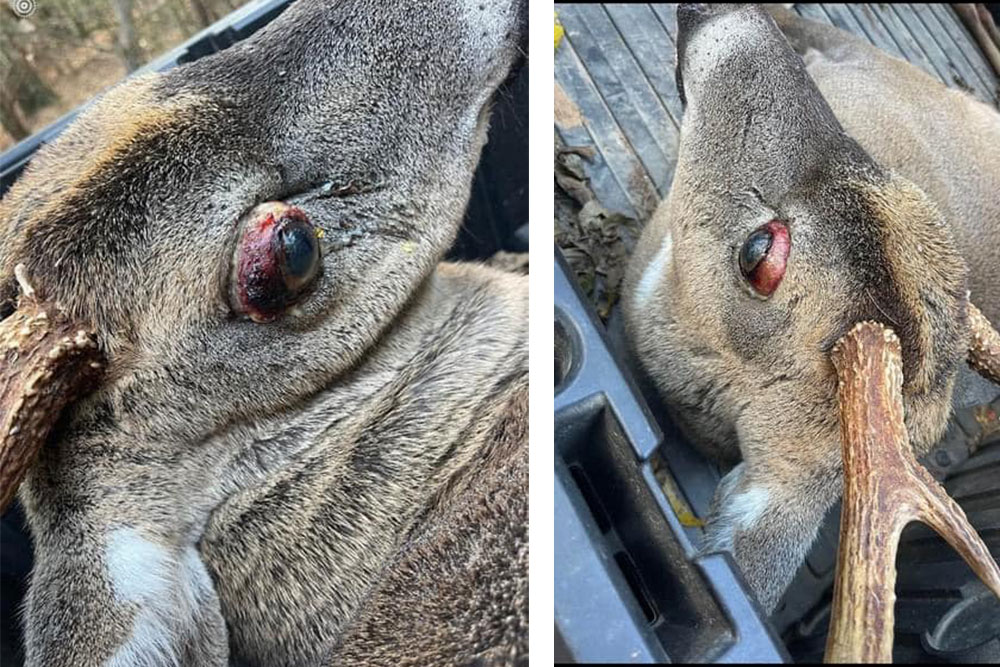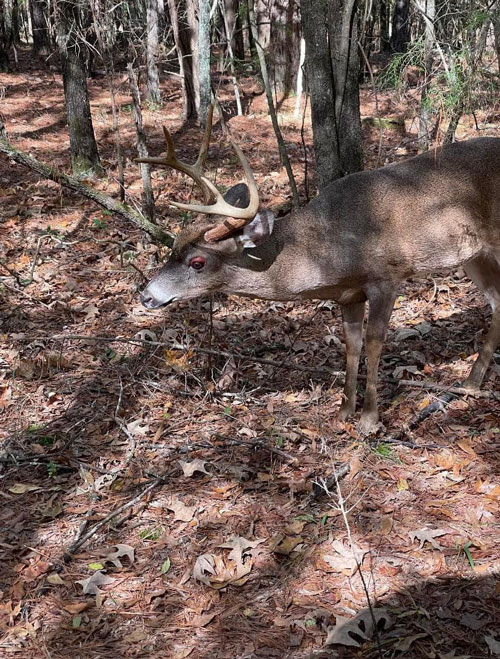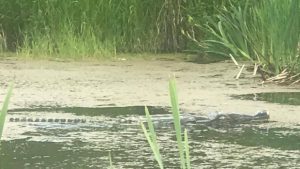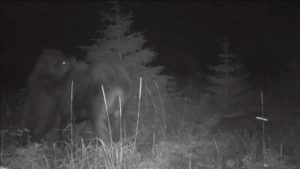A hunter in South Carolina came across something seemingly out of a zombie flick when he spotted a nice looking whitetail buck with a peculiar gaze to him. As the hunter approached the animal on his side-by-side, he was surprised to see a buck of this caliber continue to stand there without flinching.
He continued his approach on the deer and as he got closer, he could see that the animal was suffering from some sort of affliction. Bloodshot eyes bulged out of the animal’s skull as it remained still as if it were blind and deaf, not moving a single muscle.
The hunter decided to make the call to kill the animal and end whatever suffering it was enduring. Doing the right thing, the hunter promptly took some pictures and video of the animal and sent them out to the South Carolina Department of Natural Resources.
While many jumped to the obvious hypotheses such as chronic wasting disease (CWD) or epizootic hemorrhagic disease (EHD), the physical health of the animal pointed to the contrary. Typically deer suffering from those debilitating diseases become emaciated and sickly. Outside of the eyes, this buck’s body and antlers appeared to be very healthy.
South Carolina DNR program coordinator Charles Ruth believes that the animal had been suffering from some sort of brain abscess that ended up affecting the buck’s neurological function. He believed that such an abscess would cause extreme pressure on the brain and on the inside of the skull, resulting in bulging eyes and likely blindness.
Caused by sparring and rubbing, surface level injuries in deer are common. Ruth stated that the bacteria that naturally lives on the skin can actually make its way inside the cranium and begin the process of infection that causes such an abscess to form.
“Intracranial brain abscesses are not all that uncommon in adult bucks,” Ruth said. “We all know how these bucks, with their rubbing and fighting, tend to get beat up on their foreheads. In the right situation, this bacteria can erode a small hole through the cranium and set up a big pus pocket in the brain. Of course, you have connections to the sinuses and the eyes and the ears, which may explain the eye bulging.”
Ruth went on to explain that roughly 4 to 6 percent of all deer suffer from brain abscesses which become more common during the fall months when mature bucks are most active.






